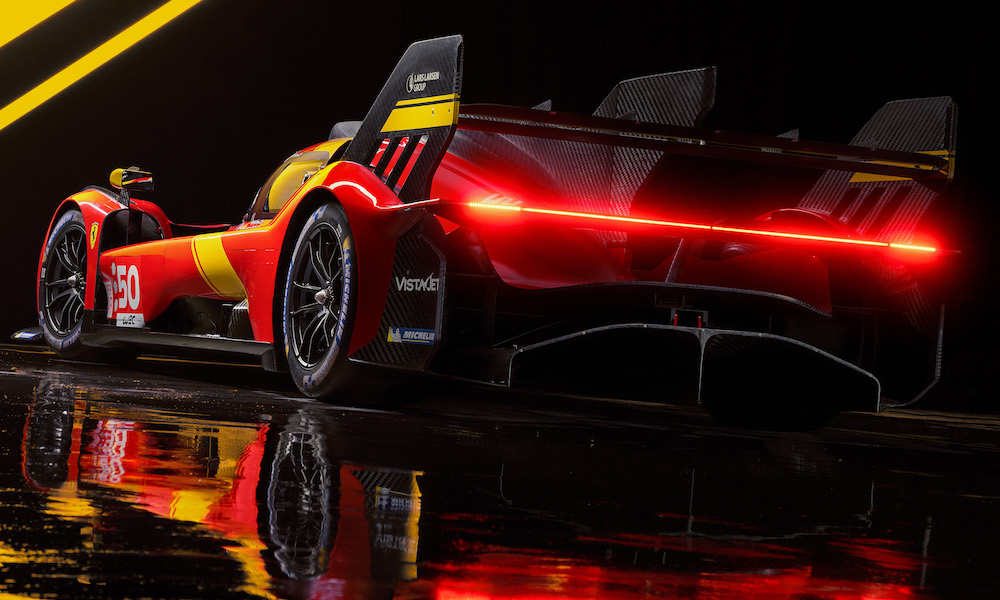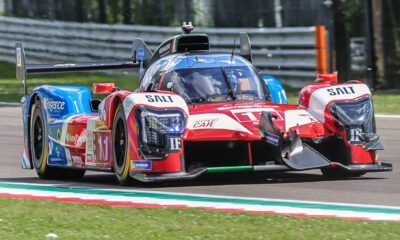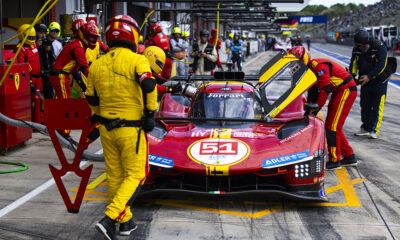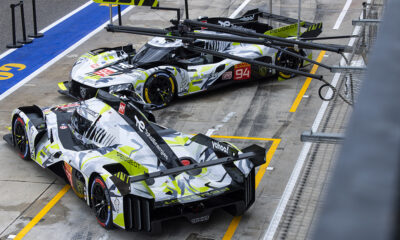Ferrari’s decision to equip its 499P LMH car with a 3-liter V6 internal combustion engine was a “natural” one considering the layout’s road vehicle relevance and technological benefits, according to project technical director Ferdinando Cannizzo.
The hybrid-powered Ferrari 499P powertrain features a twin-turbocharged, direct injection V6 linked to a 200-kW electric motor and a 900-volt battery, which is derived and developed from the Formula 1 unit.
The internal combustion engine layout is the same as the one found in the road-going Ferrari 296 GTB.
Ferrari used the 296’s engine as the starting point for the 499P before giving it a “thorough overhaul” for use in the FIA World Endurance Championship’s Hypercar class starting next year.
“We are using this as a kind of testing map,” said Cannizzo.
“As long as we made the first step in developing a racing engine of the 296 GT3, it was pretty straightforward to start from there and develop an LMH version.
“This guaranteed the possibility to feedback all we have learned with this engine.
“The car is in a much easier way than if we developed the engine from scratch. It [shares] some of the architecture, but otherwise it’s specific [to LMH].
“The target is, in the end, if we accept the same architecture of the 296 it is much easier to have technological feedback to the road cars.”
Cannizzo explained that different engine configurations were evaluated in the early stages of the LMH development program.
Ferrari ultimately went for the same number of cylinders as its LMH rivals Toyota and Peugeot, which have 3.5-liter and 2.6-liter twin-turbo V6 offerings respectively.
Alongside being a reflection of the manufacturer’s road car direction, the V6 emerged as Ferrari’s preferred layout due to its size and its ability to be integrated into a hybrid powertrain that can produce no more than 500 kW (670 horsepower) per the LMH rules.
“In the very initial phase we considered a V12, a V8, a V6 – everything to be honest,” Cannizzo said.
“When you make a decision you have to understand what you are missing or losing if you go in one direction. But selecting the V6 was no compromise [and] definitely the right path to follow considering the way our range of road cars is moving. It was natural to go there.
“Also the fact that a V6 is small, light and very compact: this gives an advantage in packaging, weight distribution and center of gravity.
“It is a 120-degree – the same architecture of the 296 but a stressed engine, so completely different in terms of structure.”
During a launch event at Imola, Ferrari’s sports car racing director Antonello Coletta described the 499P as both “a tribute to our past and a manifesto for our future.”
The LMH project will bring Ferrari, as a factory team, back to the top tier of endurance racing for the first time in half a century.
“The design is like the 296,” Coletta said. “The base is the six-cylinder. The engine is developed in each part because it’s completely different to the engine of the street car.
“This is the base of our philosophy: all the experience of the six-cylinder road cars has been the base for this engine.
“We came back into prototypes in the maximum category, but we have not forgotten that racing is a laboratory for street cars. This link is very important for us.”
Ferrari Explored “Different Solutions” for Car Design
As was the case in the early stages of the engine layout, Ferrari looked at different options for the profile of its LMH car, which will compete in a single downforce kit per the technical regulations.
Cannizzo acknowledged that a “no wing solution” pioneered by the Peugeot 9X8 was considered before Ferrari opted for a winged setup featuring three large vertical fins.
“The constraints for the aero stability are quite demanding,” Cannizzo said.
“We tested several options. Considering the trade-off between aero sensitivity and the aero of the car, we selected this configuration.
“At the end [it] was quite interesting for our Centro Stile [design team] because it is quite interesting with two wings with which you can play a little bit.”
According to Cannizzo, Ferrari’s sports car racing department first created their performance-based idea for the car’s look before receiving input from the manufacturer’s styling department to create a vehicle that fulfills the company’s visual expectations.
“We continued working from a pure technical point of view until a certain stage we said we know how to play with the parts and then Centro Stile jumped [in],” he said.
“We had a fantastic collaboration with Flavio [Manzoni]’s team at Centro Stile. We worked very well together. We understood each other very well, and our different needs.
“This gave them the possibility to adjust our design and then we readjusted their suggestions. It was a kind of loop, and then in the end we converged on something.
“For me, it looks fantastic. When I see it, it is clearly a Ferrari.”


























